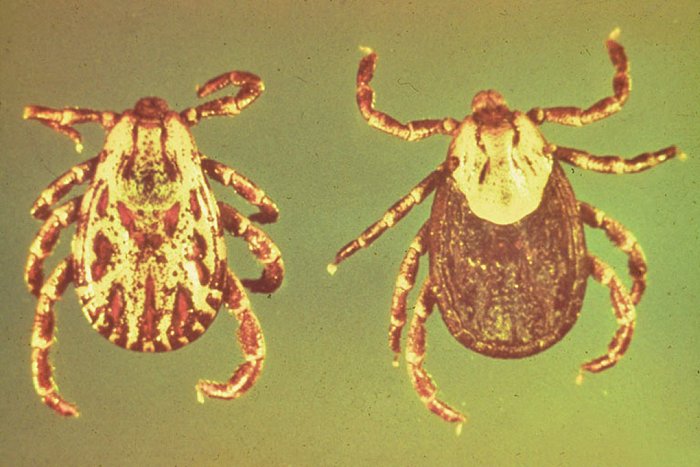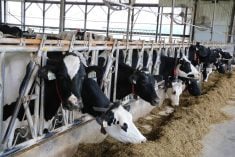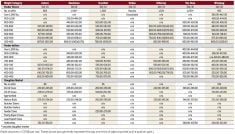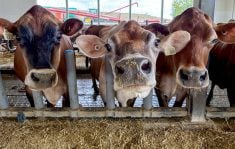They only have eight tiny legs, but ticks are on the move in Manitoba and across the Prairies.
“They’re moving north for sure,” said entomologist Kateryn Rochon, noting the arthropods travel with their hosts, including deer, birds, rabbits and other animals.
The University of Manitoba professor is tracking the movement of the American dog tick in the province, as part of a three-year research project with the backing of the Beef Cattle Research Council.
“We’re looking at variations in abundance in two species of tick — two very closely related species — one is the Rocky Mountain wood tick, which they have in Alberta and the western part of Saskatchewan, and then the wood tick that we have here. The proper name is the American dog tick, but everybody here calls them wood ticks,” she said.
Read Also

Beekeepers want financial protection against tropi mite
Tropilaelaps (tropi) mites haven’t landed in Canada yet; beekeepers want to know they’ll get federal financial help if the deadly bee parasite ever does
Both have the ability to transmit bovine anaplasmosis.
“It’s a bacterial disease… it invades blood cells and it destroys blood cells,” said Reynold Bergen of the research council. “It can cause anemia, jaundice, fever, reduced milk production, abortion and in severe cases, it can kill animals.”
The last time tick populations were comprehensively mapped in Manitoba was nearly half a century ago, Rochon said, adding that new surveys show that ticks have since expanded their territory northward.
“Last year, in 2013, pretty much everywhere we went we found a fairly large amount of ticks,” said the researcher. “We’re finding them in areas north of the traditional distribution line… so we’re trying to figure out how these populations change between years and is there something that we can actually model — is there something here we can predict?”
For many years, the transmission of anaplasmosis — generally considered a rare occurrence in Canada — was monitored by the Canadian Food Inspection Agency (CFIA). But on April 1 this year, it lost its status as a reportable disease.
Bergen said the change to reporting requirements comes as the CFIA shifts its mandate towards diseases that impact trade or human health.
“If there is a positive test, labs still need to report it, but now it is just record-keeping. It’s not an active surveillance, and there’s not a response,” he said.
Anaplasmosis is not a threat to human health, and because it already occurs in American herds, a Canadian outbreak wouldn’t impact trade relations, Bergen said.
“It has never gained a foothold here, it’s never become established,” he said, but he added that it still benefits producers to better understand the disease and the ticks that spread it.
“The CFIA and the federal government are sort of getting out of this, but there is a value to industry to have a better baseline for what kind of ticks we see, and where,” he said.
- From the Canadian Cattlemen: CFIA to give up on wiping out anaplasmosis
While complicated, Rochon believes the main factor in the northward tick trajectory is climate change, which opens up new, more northern territory for tick hosts.
Thus far, her work has taken her north of Manigotagan, past the Duck Mountains and to Steep Rock Junction — all of which are now home to wood ticks.
“I talk to producers when I’m out on their land to get ticks, and they would say, you know I never saw ticks when I was growing up — I’ve been here all my life and never saw ticks, and now they’re everywhere,” Rochon said.
In addition to examining the impacts of climate and weather on anaplasmosis-carrying ticks, the study also aims to examine genetic relationships between arthropod populations.
“Are the ticks from around Dauphin related to ticks in the Sandilands, or are they actually different populations that don’t mingle?” asked Rochon.
Few options exist for protecting cattle from ticks, although some insecticides designed for flying insects can offer some protection.
“It’s tricky, because in areas where there are a lot of ticks, there’s not much you can do, especially in pastures — you can’t mow and remove their food.”
However, wet areas tend to have fewer ticks, while transition areas between forest and pasture tend to have the most. If possible, avoid pastures with high tick populations during mid-June when populations peak, said Rochon.
“But I realize that not everybody has the luxury of moving their animals to a pasture that is less “ticky,” but if you can, that would probably be your best bet,” she said. Practices such as mowing the grass on trails used to move animals — especially if they are tree lined — also assist in lessening tick exposure.
While not part of the cattle study, the entomologist noted that black-legged ticks, the species that carries Lyme disease, are also expanding their range northward, although not as quickly as the wood tick.
“Pretty much, you’re at risk getting a bite from a black-legged tick almost anywhere in Manitoba… I mean the chances are really low in some areas, but it is possible,” she said.
If a tick does latch on to you, stay calm and remove it with tweezers.
“You don’t burn it, you don’t put vaseline on it, you don’t use kerosene, and you definitely don’t use kerosene and fire,” Rochon said. “The best way is to use thin tweezers, you want to use the thin ones more than the flat thick ones, because the goal is to not press on the body… lift the tick perpendicular to skin, pull up slowly, but steady and eventually it will just pop off.”
















